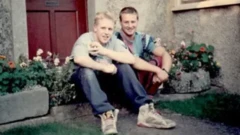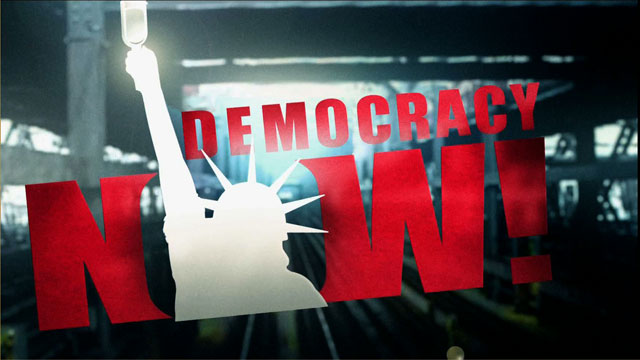Report on Police Sabotage of the Civil Rights Movement and its Implications for Sustainable Development Goals
Introduction: Historical Context and SDG Relevance
An analysis of police actions during the 1960s Civil Rights Movement reveals a systematic effort by local law enforcement agencies to sabotage activist goals through violence, surveillance, and infiltration. This history, as chronicled by author Joshua Davis, provides a critical framework for understanding persistent obstacles to achieving the Sustainable Development Goals (SDGs), particularly SDG 16 (Peace, Justice and Strong Institutions) and SDG 10 (Reduced Inequalities). The tactics employed by police departments represent a fundamental failure of public institutions to protect citizens and uphold the rule of law, directly impeding progress toward a just, equitable, and peaceful society.
Undermining SDG 16: Peace, Justice, and Strong Institutions
The actions of local police departments during the Civil Rights era directly contravened the core principles of SDG 16, which aims to promote peaceful and inclusive societies and build effective, accountable institutions at all levels.
- Failure of Institutional Accountability: Civil rights activists did not passively endure police violence but actively protested against it. However, little to no action was taken to hold departments or individual officers accountable. This systemic failure undermines SDG Target 16.6, which calls for the development of effective, accountable, and transparent institutions.
- Suppression of Fundamental Freedoms: The use of violence against peaceful protestors represents a direct assault on the fundamental freedoms essential for sustainable development, as outlined in SDG Target 16.10 (ensure public access to information and protect fundamental freedoms).
- Erosion of the Rule of Law: The widespread use of trumped-up felony charges and other sophisticated legal tactics against activists demonstrates a manipulation of the justice system, violating the principles of SDG Target 16.3 (promote the rule of law at the national and international levels and ensure equal access to justice for all).
Exacerbating Inequalities in Violation of SDG 10
Police brutality and sabotage were not merely a response to civil unrest but a deliberate tool to maintain racial hierarchy and suppress the movement for equality, directly challenging the objectives of SDG 10 (Reduced Inequalities).
- Enforcement of Systemic Discrimination: Activist groups like SNCC and CORE correctly identified local police brutality as a component of white supremacy. These actions were designed to prevent the social and political inclusion of Black Americans, in direct opposition to SDG Target 10.2 (empower and promote the social, economic and political inclusion of all).
- Sophisticated Surveillance and Infiltration: Local police departments operated political intelligence units, or “red squads,” that predated and mirrored the FBI’s COINTELPRO. These units used undercover officers to infiltrate activist groups, gather intelligence, and disrupt their operations, thereby ensuring that discriminatory policies and practices remained unchallenged, contrary to SDG Target 10.3 (ensure equal opportunity and reduce inequalities of outcome).
Case Study: Houston and the Violation of Community Safety (SDG 11)
The experience in Houston, Texas, exemplifies how police actions created unsafe and non-inclusive communities, undermining the goals of SDG 11 (Sustainable Cities and Communities).
- Excessive Force Against Students: Following the establishment of a SNCC chapter at Texas Southern University (TSU), Houston police raided a student dormitory, firing over 1,000 rounds of ammunition. This act of extreme violence created an environment of fear and insecurity, directly contradicting the goal of making human settlements safe and inclusive.
- Perversion of Justice: Five TSU students were indicted on felony murder charges for the death of an officer during the raid, despite a lack of evidence and eyewitness accounts of police crossfire. The charges were eventually dropped after three years, highlighting the use of the legal system to suppress dissent.
- Creation of Political Prisoners: Activist Lee Otis Johnson was sentenced to 30 years in prison for possession of a single marijuana joint. His case became an international symbol of political persecution, demonstrating how institutions can be weaponized to silence those fighting for equality.
Legacy and Contemporary Relevance to the 2030 Agenda
The historical record shows that the modern Black Lives Matter movement is not initiating a new protest against police violence but is continuing an unfinished struggle from the Civil Rights era. This history is foundational to understanding the deep-rooted challenges in achieving the 2030 Agenda for Sustainable Development.
- The struggle against police violence in the 1960s laid an important foundation for later activists, demonstrating a continuous and generational effort to achieve justice and equality.
- Understanding this “lost chapter” of the Civil Rights Movement is essential for contextualizing contemporary demands for police reform and institutional accountability.
- Achieving the SDGs, particularly goals related to peace, justice, and equality, requires a direct confrontation with the historical and ongoing legacy of institutional racism and the failure of state bodies to protect the rights of all citizens.
1. Which SDGs are addressed or connected to the issues highlighted in the article?
-
SDG 16: Peace, Justice and Strong Institutions
- The article’s central theme is the failure of justice and law enforcement institutions. It details how local police departments, instead of upholding peace and justice, actively used violence, surveillance, and sabotage against civil rights activists. This directly relates to the goal of building effective, accountable, and inclusive institutions at all levels. The text highlights a systemic lack of accountability for police violence and the use of the justice system to persecute activists with “trumped-up felony indictments,” which is a clear subversion of peace and justice.
-
SDG 10: Reduced Inequalities
- The article is set against the backdrop of the civil rights movement, a struggle fundamentally aimed at reducing racial inequality. The police violence and surveillance were directed at activists “protesting racist policies.” This institutional opposition was a mechanism to maintain the existing racial hierarchy and prevent the social and political inclusion of Black Americans, directly connecting to the goal of reducing inequalities within and among countries.
2. What specific targets under those SDGs can be identified based on the article’s content?
-
Targets under SDG 16: Peace, Justice and Strong Institutions
- Target 16.1: “Significantly reduce all forms of violence and related death rates everywhere.” The article explicitly discusses “police violence against those protesting,” the raid on the Texas Southern University dorm where police fired “over 1,000 rounds of live ammunition,” and the death of a police officer during the raid.
- Target 16.3: “Promote the rule of law at the national and international levels and ensure equal access to justice for all.” This target is relevant due to its subversion. The article describes how the law was used as a weapon against activists, such as the five students indicted on “felony murder charges” that were later dropped, and Lee Otis Johnson, whose “constitutional rights had been violated” by the district attorney. This demonstrates a failure to provide equal access to justice.
- Target 16.6: “Develop effective, accountable and transparent institutions at all levels.” The article points to a complete lack of institutional accountability, stating that “little or nothing was done to hold local departments and officers accountable for that violence.” The failure to conduct or release ballistics and forensics reports in the death of Officer Kuba further illustrates a lack of transparency.
- Target 16.10: “Ensure public access to information and protect fundamental freedoms, in accordance with national legislation and international agreements.” The actions of the police “red squads,” which conducted “surveillance, infiltration, defamation,” were direct attacks on the fundamental freedoms of speech, assembly, and association that are essential for a functioning democracy and civil rights advocacy.
-
Targets under SDG 10: Reduced Inequalities
- Target 10.2: “By 2030, empower and promote the social, economic and political inclusion of all, irrespective of… race, colour, ethnicity…” The efforts of the police to “sabotage… the civil rights struggle” were a direct counterforce to the political inclusion of Black Americans. The goal of the activists was inclusion, while the goal of the police actions described was to maintain their exclusion.
- Target 10.3: “Ensure equal opportunity and reduce inequalities of outcome, including by eliminating discriminatory laws, policies and practices…” The article notes that activists were “protesting racist policies.” The police response was not to protect the protestors’ rights but to violently enforce the discriminatory status quo, thereby working against the elimination of discriminatory practices.
3. Are there any indicators mentioned or implied in the article that can be used to measure progress towards the identified targets?
-
Indicators for SDG 16 Targets
- For Target 16.1 (Reduce Violence): The article implies the use of indicators such as the “number of violent incidents involving police and protestors” and the “number of deaths and injuries resulting from civil unrest,” as exemplified by the raid on the TSU dorm and the death of Officer Kuba.
- For Target 16.3 (Rule of Law): The article points to indicators like the “number of individuals subjected to arbitrary detention or politically motivated indictments” (the TSU Five, Lee Otis Johnson) and the “number of legal cases overturned due to violations of constitutional rights,” as seen when a federal court released Lee Otis Johnson.
- For Target 16.6 (Accountable Institutions): Progress could be measured by the “number of police officers held accountable for misconduct” (the article states this was near zero) and the “existence and implementation of transparent investigation protocols for police-involved violence,” which the article implies were absent in the investigation of Officer Kuba’s death.
- For Target 16.10 (Protect Freedoms): An indicator is the “number of verified cases of surveillance, harassment, and arbitrary detention of human rights advocates (civil rights activists),” which the article describes as a widespread practice by local police “red squads.”
-
Indicators for SDG 10 Targets
- For Target 10.2/10.3 (Reduce Inequality): The article implies indicators related to the “existence and enforcement of anti-discrimination laws” and the “level of public trust in institutions among different racial groups.” The fact that activists had to protest “racist policies” and were met with violence from state institutions indicates a failure on both counts. Progress would be measured by a reduction in such protests being necessary and a change in institutional response.
4. Create a table with three columns titled ‘SDGs, Targets and Indicators” to present the findings from analyzing the article.
| SDGs | Targets | Indicators (Identified in the Article) |
|---|---|---|
| SDG 16: Peace, Justice and Strong Institutions |
16.1: Significantly reduce all forms of violence.
16.3: Promote the rule of law and ensure equal access to justice. 16.6: Develop effective, accountable and transparent institutions. 16.10: Ensure public access to information and protect fundamental freedoms. |
– Incidents of police violence against protestors. – Number of deaths and injuries during police actions (e.g., the raid on the TSU dorm). – Use of “trumped-up felony indictments” against activists. – Lack of accountability for officers and departments involved in violence. – Existence of police units (“red squads”) for political surveillance and infiltration. |
| SDG 10: Reduced Inequalities |
10.2: Empower and promote the social and political inclusion of all, irrespective of race.
10.3: Ensure equal opportunity and eliminate discriminatory policies and practices. |
– Organized state-level opposition (sabotage) to movements for political inclusion. – Use of institutional power to suppress activism from a specific racial group. – Existence of “racist policies” requiring public protest. |
Source: texasstandard.org





